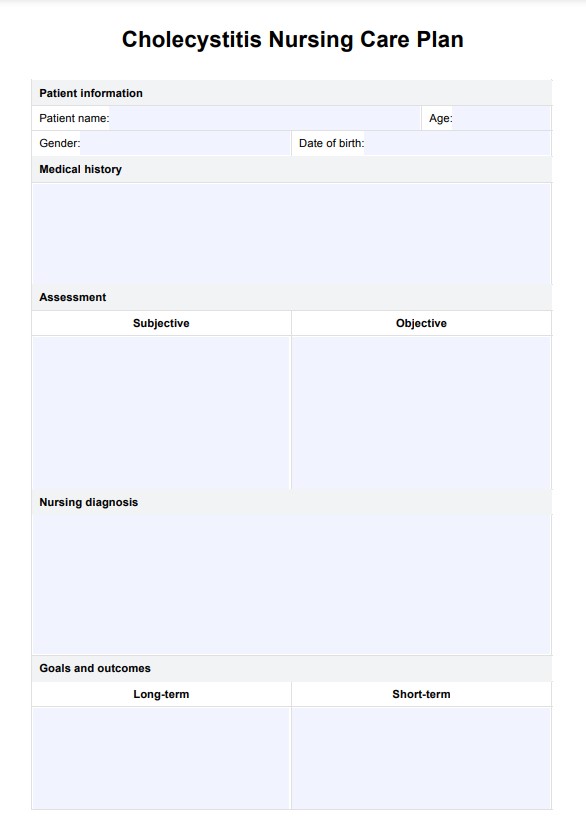The nursing plan for cholecystitis includes assessment, diagnosis, goals and outcomes, interventions, rationale and evaluation. These components work together to ensure that patients receive comprehensive and individualized care.

Cholecystitis Nursing Care Plan
Discover our Cholecystitis Nursing Care Plan template to enhance patient care. Personalize interventions, monitor progress, and support recovery efficiently.
Cholecystitis Nursing Care Plan Template
Commonly asked questions
The nursing care plan for cholecystitis comprises several key components: assessment, diagnosis, goals and outcomes, interventions, rationales, and evaluation. Together, these elements ensure that patients receive thorough and personalized care tailored to their specific needs.
The nursing plan for cholecystectomy, the surgical removal of the gallbladder, is similar to that of cholecystitis. However, there are some specific considerations that must be taken into account for post-operative care.
EHR and practice management software
Get started for free
*No credit card required
Free
$0/usd
Unlimited clients
Telehealth
1GB of storage
Client portal text
Automated billing and online payments











